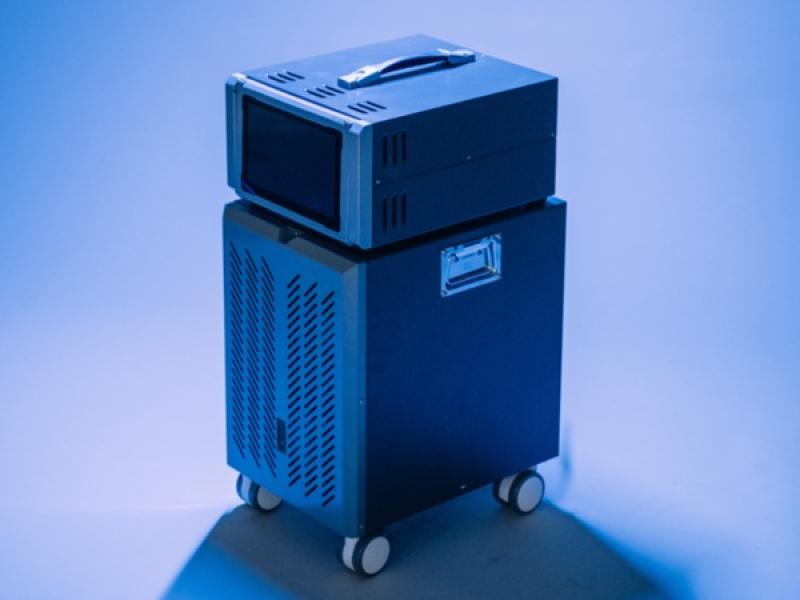
Toronto-based renewable energy company Noventa Energy has received a total of $166 million from the Canada Infrastructure Bank (CIB), and the firm's largest shareholder Ancala Partners, to develop Wastewater Energy Transfer (WET) projects in Toronto and around the world.
Founded by CEO Dennis Fotinos, Noventa has developed its trademarked WET system to heat and cool buildings using wastewater, which cuts down dependency on fossil fuel energy sources.
On Monday, Noventa announced it received a $100-million loan from the CIB to retrofit heating and cooling systems through an energy-as-a-service (EaaS) delivery model.
Fotinos told SustainableBiz in an interview Noventa also committed to a $66-million investment via Ancala, a London-based renewables and infrastructure investor, to access the capital.
“It’s only been three weeks since we closed the deal with Ancala and less than a week since we announced the deal with CIB,” Fotinos said. “We’re very eager to move forward with (the) pipeline of projects we have.”
The CIB loan and Ancala
The $100-million loan from the CIB will support its pipeline of nine projects in Toronto. Fotinos said Noventa received approval for those projects from the city in 2022 and signed memorandums of understanding with customers.
The nine Toronto projects are in an advanced engineering design state, he added, and are comparable its first WET system installation at Toronto Western Hospital project in size and scope.
Fotinos said the hospital project will be the largest wastewater treatment system in the world when is finished – hopefully by the end of the year. It will supply up to 90 per cent of heating and cooling needs for the hospital campus, Noventa says, reducing greenhouse gas emissions by approximately 8,400 tonnes per year.
The loan, according to a press release, is part of the CIB's Building Retrofits Initiative, “which provides long-term investments for building retrofits to modernize and improve the energy efficiency of existing buildings.”
This is the second loan from the CIB; Noventa received $19.2 million for the Toronto Western Hospital project.
The $66 million provided via Ancala will support both the Toronto projects and future opportunities. Fotinos described the access to capital as a “game changer” as it opens up additional opportunities in Canada, the U.K. and the U.S.
Noventa’s WET system and EaaS
WET is Noventa’s wastewater heat recovery process that uses Huber Technology’s ThermWin solution and Noventa’s proprietary system for low-emissions heating and cooling.
Fotinos said WET starts with the construction of a ‘Wetwell’ to access sewers, then Huber’s RoK4 pump system screens out solids from the wastewater. Thermal energy is extracted or rejected from the sieved brown water, then pumped to Huber’s RoWin heat exchangers. RoWin modifies the water, which is sent to a heat pump that provides the “lift” for a building’s heating or cooling systems.
WET can provide carbon-free heating and cooling to reduce energy needs and natural-gas-based heating, and can eliminate up to 100 per cent of Scope 1 emissions on site, the CEO said. WET typically provides 80 to 90 per cent of a client’s energy requirements, which Fotinos said “substantially” reduces greenhouse gas emissions.
“We have to balance the capital costs and the energy output of the system to make it environmentally friendly, but also affordable,” he explained. “Sometimes it’s better that the customer uses other, cheaper alternatives to produce the remaining 10 or 15 or 20 per cent of their energy needs.”
Noventa uses an EaaS model, with the customer funding the construction and design of Noventa’s WET systems through an energy subscription, rather than having the customer pay up front for the capital costs.
Future Scottish and U.S. projects
Fotinos also unveiled some details about Noventa’s international list of pending projects. The company has eight projects in Scotland at the design stage set for industrial and institutional customers.
“That’s a market we feel very bullish about because Scotland has a very strong commitment to fighting climate change,” he said.
His company is also continuing its quest to set up a WET system in King County, Wash., after the COVID pandemic put a damper on its plan to install its first project there. Noventa still has an award from the county for the project, and intends to fulfill it with the financial support of Ancala.
Noventa is also exploring installing WET systems in New York, Florida, Washington, California and Washington D.C.
“We’re very excited about the prospects for the next six to 18 months,” Fotinos said, noting he hopes soon to make further major announcements.










